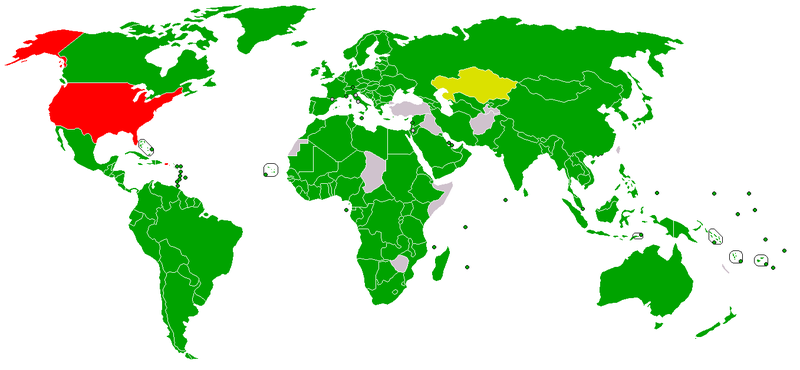The impact of Industrial activities on the Environment is forcing the organizations to control their activities, products and services for mitigating the impact on the environment. The ISO 14001 standard is primarily concerned with "environmental management." This means that the organization needs to:
- Identify the harmful effects of their activities, on the environment, and plan to reduce the impact
- Achieve continual improvement in its environmental management system and environmental performance.
Need for ISO 14001 Standard?
ISO 14001 was first published in 1996 by the International Organization of Standardization (ISO). The standard is very well accepted across all type of industries, world over for an environmental management system and continual improvement in Environmental performance.
The standard, ISO 14001 has some specific set of requirements, which helps organizations in improving environmental performance through more efficient use of resources and reduction of waste, bench-marking their existing environmental performance, gaining a competitive advantage and also enhancing image of the company.ISO 14001 includes the need for continual improvement of an organization's systems and approach to environmental concerns. The standard ISO 14001 , ensures increased prominence of environmental management within the organization's processes, with input from management and a commitment to proactive initiatives that enhances environmental performance.
Why Adopt an EMS Standard
As researchers' study and discover the adverse impacts of pollutants on the environment, international organizations have framed many laws and converted into it a treaty to curb the pollution. Countries who have committed to such treaties are obliged to accept such protocols on international forum. In 1987, Montreal protocol was signed for eliminating the manufacture and use of Chloro Floro Carbons (CFCs), which were used in ACs and Refrigerators, since it was found that these CFCs have created a hole in the Ozone layer in the Stratosphere, which filters UV rays from the sun from falling on the earth.
In 1997, Kyoto Protocol was signed to reduce the emission of Green House Gasses into the atmosphere which have led to the increase in earth temperature and Climate Change problems. Bhopal tragedy happened in India due to an Environmental accident though it was never thought that such an accident can ever happen. So the company was not prepared to deal with such a situation, leading to the disaster. Had the company done a proactive analysis of their activities, envisaging potential Abnormal and Emergency situations, they would have identified leakage of Methyl Iso Cyanate (MIC) gas into the atmosphere as a potential emergency situation and would have put some controls in place, that could have avoided the disaster.

ISO 14001 is the business improvement tool that helps organizations in analysing their activities proactively and systematically for their Environmental aspects that may lead to a Significant Impact on the Environment and once potential significant Environmental aspects are identified, decide the controls required to avoid and/or mitigate the impact. It brings environmental management into the heart of an organization, complementing business strategy and helping improve environmental performance over time.
Incorporating the latest environmental thinking including lifecycle perspective, it helps provide greater protection to the environment. It's a framework which helps you focus on the increasing expectations of society, as well as regulatory requirements. To decrease the carbon footprint on the final products and their commitment towards stakeholders many large scale Original Equipment Manufacturers are making it compulsory for their suppliers to adopt a sustainable framework on environmental management system. Such organizations can adopt ISO 14001:2015 for setting up such frameworks. Similarly, many Stakeholders, investment Agencies and financial lenders have even made environmental performance standards as a criterion for the review process of liability.
This standard requires the organization to identify improvement plans, use the resources in efficient way, study their environment to reduce pollution, reuse, recycle and effective management of wastes. Due to the requirement of sustainable development, ISO 14001:2015 helps organizations of any size towards cost savings.
To retain and to have access to new Business opportunities or markets, many organizations are adopting ISO 14001:2015 to meet this requirement. For example, to do business in Europe an organization has to comply to REACH (Registration, Evaluation, Authorization and Restriction of Chemicals) regulations set by the European Union. Similarly, to supply Electrical and Electronic equipment in Europe an organization has to comply with the RoHS (Restriction of Hazardous Substance) Directive passed by the European Union.
What Are the Benefits of ISO 14001:2015?
Implementing ISO 14001:2015 has many benefits for organizations, since using the standard helps them:
- # Proactive and not Reactive Approach
- # Reduce costs through Conservation of Natural Resources for Sustainable Development
- # Improve resource efficiency
- # Manage environmental Compliance Obligations
- # Reduce waste
- # Understand needs and expectations of Interested parties
- # Culture of Continual Improvement in Environmental performance
- # Protect the environment, including the prevention or reduction of adverse impacts;
- # Using a life cycle perspective to prevent environmental impacts from being transferred elsewhere within the cycle;
- # Improve Communication with relevant interested parties.
- # Increase stakeholder and customer trust
- # Provide assurance that environmental impact is being measured and controlled
- # Increase new business opportunities

